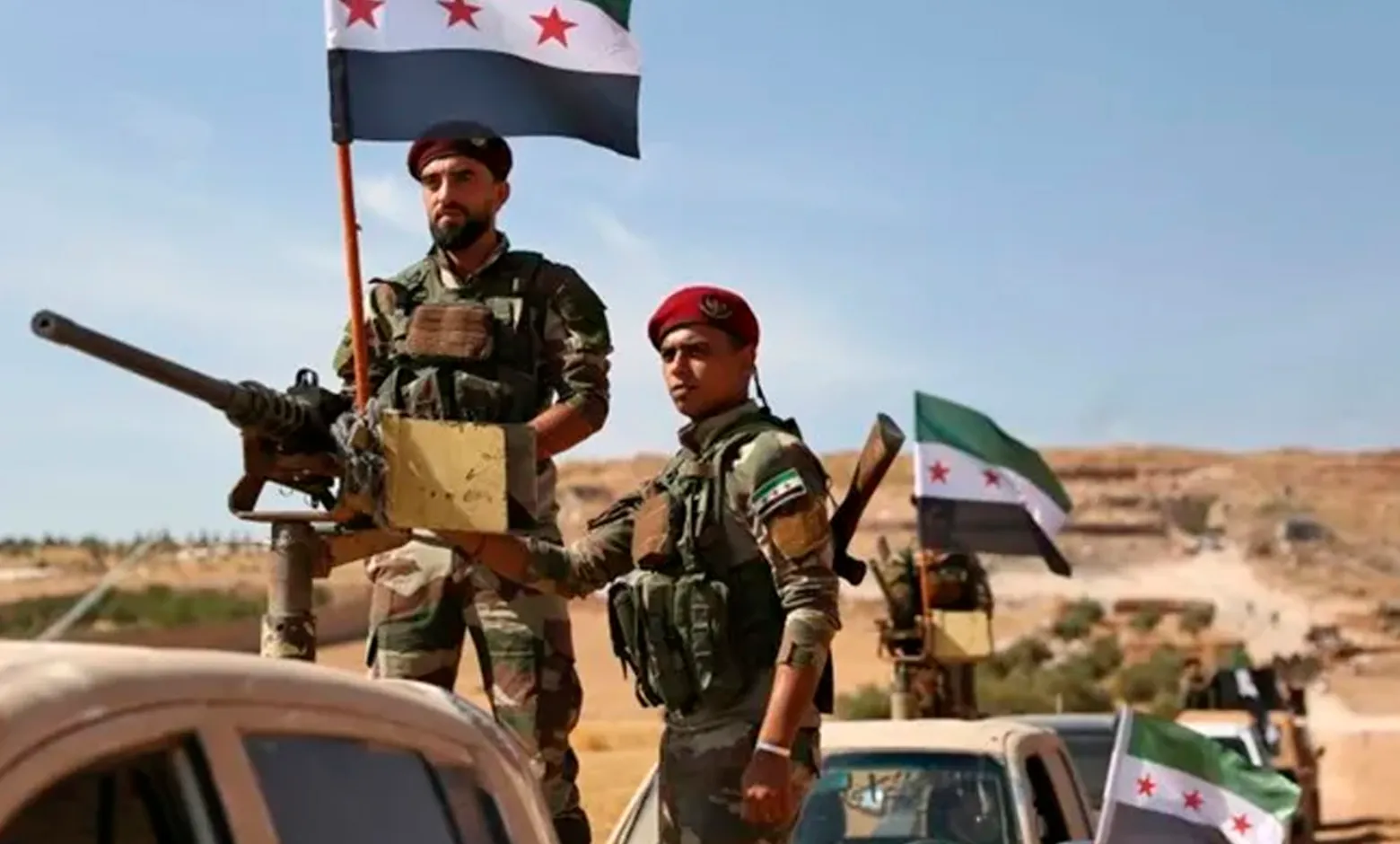In one of the most significant escalations since the 2020 ceasefire, Syrian opposition factions launched Operation Deterrence of Aggression, recapturing key territories in western Aleppo and eastern Idlib while inflicting heavy losses on regime forces and their allies. The offensive marks a critical shift in the balance of power in northwest Syria, with implications for Iranian-backed militias, Turkey, and Russia.
Rapid Territorial Gains and Strategic Advances
According to Syria TV, the opposition forces coordinated through a unified operations room involving thousands of fighters, enabling them to reclaim over 32 villages and strategic points across 245 square kilometers in less than 48 hours. Key gains include Al-Hota, Urum al-Kubra, Ainjara, Khan al-Asal, and the 46th Regiment, a major regime military stronghold west of Aleppo.
These advances have brought opposition forces to within five kilometers of Aleppo city, marking the first significant breach of the frontlines since the March 2020 ceasefire. Pro-regime sources reported heavy losses during battles for the 46th Regiment, including the deaths of more than 15 officers and fighters.
Iranian Influence Suffers a Major Blow
Damas Post highlighted the death of Brigadier General Keyomarth Pourhashemi, commander of Iranian military advisors in Aleppo, as a major outcome of the offensive. Iranian state media confirmed his death on November 28, with opposition forces targeting Iranian militia command centers and infrastructure. This marks a significant setback for Iran, whose influence in the region has been steadily declining amidst mounting regional pressures.
The operation appears strategically timed to coincide with the recent ceasefire between Israel and Hezbollah in Lebanon, likely to prevent Hezbollah from redirecting its forces to northern Syria. Analysts suggest that Iran and Hezbollah may have been attempting to reposition their forces supporting the regime away from Israeli border areas, as per longstanding Israeli demands, concentrating instead on Aleppo, Idlib, and Deir Ezzor provinces.
Turkish Position and Regional Calculations
According to Syria TV, Turkish officials view the operation as a reminder of the vast territories previously controlled by opposition factions, including most of Idlib province and large portions of Aleppo’s countryside. A senior Turkish official told Middle East Eye that the operation aligns with the 2019 Idlib de-escalation zone boundaries agreed upon by Turkey, Russia, and Iran.
Turkey appears to be using this offensive to test Russian tolerance for limited territorial shifts and to pressure Iran for obstructing Ankara-Damascus negotiations. Meanwhile, Russian responses have so far been muted compared to past escalations, though airstrikes on eastern Idlib resumed on Thursday, reportedly causing civilian casualties.
Syrian Regime’s Response
In a contrasting narrative, the official news agency SANA reported that the Syrian Armed Forces have been actively repelling what they describe as a “large-scale terrorist offensive” launched by Jabhat al-Nusra and other groups in Aleppo and Idlib. A statement from the General Command of the Army and Armed Forces described the attack as targeting civilian villages, towns, and military positions, using medium to heavy weaponry.
“Our armed forces, in cooperation with friendly forces, have successfully confronted the attack, leaving heavy losses in personnel and equipment among the terrorists,” the statement read. The regime’s focus remains on protecting civilian areas and stabilizing key military positions.
Transport companies in Damascus suspend their routes to Aleppo
Several external transport companies in Damascus have suspended their routes to Aleppo today, according to travelers who spoke with Pro-government Athar Press.
Passengers reported that they contacted transport companies in Damascus to book tickets to Aleppo but were informed that services to the city are temporarily halted. The companies did not provide a specific timeline for the resumption of these routes.
Humanitarian and Geopolitical Implications
The opposition’s swift territorial gains have paved the way for the potential return of over 100,000 displaced civilians to their homes, alleviating some of the humanitarian suffering in the region. However, the escalating violence raises concerns about broader regional instability.
Operation Deterrence of Aggression is reshaping the conflict dynamics in northwest Syria, challenging Iranian and regime influence while testing the limits of Turkish and Russian engagement. The unfolding developments suggest a volatile and rapidly shifting landscape where local battles have far-reaching geopolitical implications.
Beyond Absolute Good and Evil
Lebanese Al-Modon Website highlights the conflicting narratives shaping the Syrian conflict, where opposition factions frame the struggle as a sectarian battle, while others focus on opposing the regime and its Iranian-backed militias.
The Syrian conflict, for Al-Modon, is marked by conflicting narratives, with opposition factions framing it as a battle between Sunni mujahideen and Alawite infidels, while others focus on fighting the regime and its “sectarian hate militias,” often referring to Iranian-backed forces. These narratives simplify the complex reality of the conflict, ignoring its civil war and sectarian dimensions, which have been exploited by the regime to label all opposition as extremist jihadists. Initially rooted in calls for political reform, the uprising escalated due to the regime’s brutal policies, leading to militarization, Islamization, and a humanitarian catastrophe described as the worst since World War II.
Over time, the opposition has struggled with inconsistent strategies and romanticized portrayals of the revolution. Efforts to present a “clean” revolutionary image, as evidenced by altered early footage, inadvertently allowed extremist elements to dominate. Meanwhile, international narratives have shifted to depict the conflict as a sectarian “power struggle,” questioning whether the revolution aimed to replace Alawite rule with Sunni dominance.
Today, both sides continue to cast the conflict in binary terms of absolute good versus evil, obscuring its complexity and fueling divisions. Resolving the crisis requires moving beyond military and ideological battles to address the root causes: the absence of an inclusive political vision and legitimate actors capable of prioritizing the needs of Syrians over sectarian and geopolitical agendas. Without this, the ongoing humanitarian and political disaster is likely to persist.
This article was translated and edited by The Syrian Observer. The Syrian Observer has not verified the content of this story. Responsibility for the information and views set out in this article lies entirely with the author.


